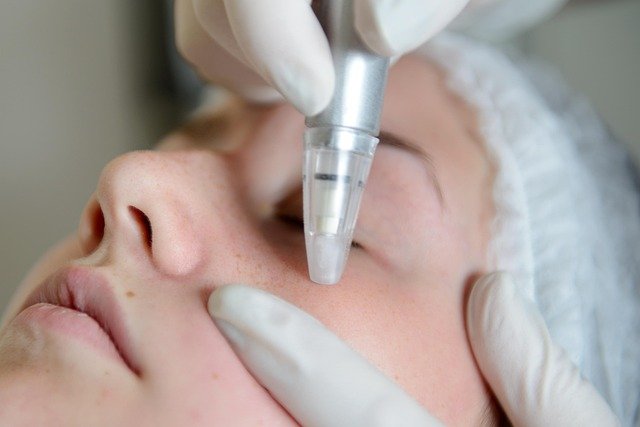Advanced Skin Rejuvenation: Achieve a Radiant Complexion
Discover how modern skin rejuvenation restores a youthful, luminous complexion. From lasers and IPL to chemical peels, microneedling, fillers, and radiofrequency, learn which treatments target wrinkles, pigmentation, scars, and laxity. Find options, expected longevity, costs, and maintenance tips to choose the best plan for healthier, firmer skin.

Skin aging and surface damage can leave skin looking dull, lined, and uneven. Contemporary skin rejuvenation methods aim to reverse these signs by stimulating the skin’s repair mechanisms or replacing lost volume. Whether you choose a laser procedure, a resurfacing peel, or injectables, the goal is the same: encourage collagen formation, improve texture, and restore a fresher, more radiant appearance.
How skin rejuvenation treatments work
Many rejuvenation techniques intentionally create controlled injury to prompt the body’s natural healing cascade. That response increases collagen and elastin synthesis, which firms and smooths tissue over weeks to months. Other therapies target problem areas — for example, breaking up excess pigment to reduce brown spots or resurfacing scarred skin to encourage growth of healthier epidermal cells. Some modalities tighten underlying structures through heat or energy delivery, while injectables restore lost facial volume to soften lines.
Popular laser and light-based options
Light-based technologies are prized for precision and predictable results. Common choices include:
- Fractional laser resurfacing: Delivers micro-injuries in a grid pattern, prompting new collagen and improving texture, fine lines, and uneven tone.
- IPL (Intense Pulsed Light): Not a true laser, IPL uses broad-spectrum light to treat sun damage, redness, and pigmentation with minimal downtime.
- CO2 laser: A more aggressive resurfacing option that addresses deeper wrinkles, significant photoaging, and some scars; recovery is longer but improvements can be dramatic.
- Nd:YAG laser: Penetrates more deeply, useful for skin tightening, vascular lesions, and reducing pore appearance.
Each laser type suits different skin tones and concerns; an experienced dermatologist or aesthetic professional will match device and settings to your needs to minimize risks like hyperpigmentation.
Non-laser rejuvenation options
If lasers aren’t right for you, several non-light-based approaches deliver meaningful improvement:
- Chemical peels: Acids of varying strength remove damaged outer layers to reveal brighter skin and reduce lines, pigmentation, and mild scarring.
- Microdermabrasion: A mechanical exfoliation that smooths texture and helps product penetration, best for mild surface concerns.
- Dermal fillers: Injectable gels replace lost facial volume, lift folds, and can restore youthful contours for several months to years depending on the product.
- Microneedling: Tiny needles create micro-injuries that stimulate collagen; often combined with topical serums or PRP for added benefit.
- Radiofrequency treatments: Deliver heat to deeper layers to contract tissue and stimulate collagen without breaking the skin’s surface.
Many patients combine approaches — for example, lasers for pigment and texture plus fillers for volume — to achieve comprehensive rejuvenation.
How long results last
Longevity depends on the treatment intensity, individual biology, and ongoing skincare:
- Laser treatments: Can provide 6 months to 2 years of visible benefit; deeper resurfacing often lasts longer.
- Chemical peels: Light peels may last 1–2 months; medium to deep peels can produce improvements lasting several months to a year.
- Dermal fillers: Typically persist from 6 months up to 2 years depending on filler type and placement.
- Microneedling: Initial results appear within weeks and may continue improving over months; maintenance sessions are recommended every few months.
- Radiofrequency: Effects commonly last 6–12 months; some individuals experience longer-lasting tightening.
To preserve outcomes, follow a dermatologist-recommended skincare routine, avoid excessive sun exposure, and schedule follow-ups or maintenance treatments as advised.
Typical costs and what to expect
Costs vary by treatment intensity, provider credentials, and region. Many procedures require a series of sessions, which increases total cost. Below is a general pricing guide to help with planning.
| Treatment | Provider Type | Cost Estimation |
|---|---|---|
| Fractional Laser Resurfacing | Dermatologist/Med Spa | $1,000 - $5,000 per session |
| IPL Therapy | Med Spa/Aesthetician | $300 - $600 per session |
| Chemical Peel | Dermatologist/Med Spa | $150 - $600 per session |
| Microdermabrasion | Med Spa/Aesthetician | $75 - $200 per session |
| Dermal Fillers | Dermatologist/Plastic Surgeon | $600 - $2,000 per syringe |
| Microneedling | Med Spa/Aesthetician | $200 - $700 per session |
| Radiofrequency Treatment | Dermatologist/Med Spa | $1,000 - $4,000 per session |
Prices, rates, or cost estimates mentioned in this article are based on the latest available information but may change over time. Independent research is advised before making financial decisions.
Choosing the right treatment
Selecting an effective and safe plan starts with a consultation. A qualified dermatologist or certified aesthetic professional will evaluate skin type, the severity of concerns, medical history, and lifestyle to recommend appropriate options. Factors such as downtime tolerance, budget, and desired speed of results matter. Ask about expected number of sessions, pre- and post-care, potential side effects, and before-and-after photos from similar patients.
Final considerations
Skin rejuvenation offers a broad toolkit to address aging, scarring, pigmentation, and laxity. Combining therapies often yields the best, most natural-looking results: energy-based treatments and peels to improve texture and tone, plus fillers where volume has been lost. Maintain results with sun protection, healthy habits, and periodic maintenance treatments.
This article is for informational purposes only and should not be considered medical advice. Please consult a qualified healthcare professional for personalized guidance and treatment.






